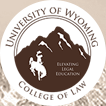Document Type
Article
Subject Area
Special Section
Abstract
Carbon capture, utilization, and storage (CCUS) presents a new way of using an old resource: the subterranean rock structures and their interstitial “pore” space that make up the subsurface of the earth. Injecting carbon into these structures also raises a number of new legal questions about their ownership and the relations between the owners of the structures and the owners of other subsurface resources contained within them, like oil and gas, coal, coalbed methane, and geologically native carbon dioxide. This Article explores these new legal questions and the conceptual difficulties they present with the aim of guiding participants in CCUS projects about the state of the law and its many open questions. Drawing on previous scholarship and analogies from oil and gas law, the Article suggests answers to, or at least ways of thinking about, several of the open questions. Specifically, this Article addresses the following: (1) ownership of subsurface rock structures and pore space under private, federal, and state-owned lands in the United States; (2) the respective rights and duties of the owners of pore space and mineral interests in the same tract of land; and (3) conflicts that may arise between pore space and mineral owners when CCUS projects are conducted alongside (a) oil and gas development, (b) coal mining and coalbed methane extraction, and (c) geologic carbon dioxide production.
DOI
10.59643/1942-9916.1505
Rights
Copyright © 2023 by the WYOMING LAW REVIEW unless otherwise noted. Except as otherwise provided, copies of any article may be made for classroom use, provided that: (1) Copies are distributed at or below cost; (2) The author and the journal are identified; (3) Proper notice of copyright is affixed to each copy, and (4) The WYOMING LAW REVIEW is notified of the use.
Recommended Citation
Schremmer, Joseph
(2024)
"Conflicts and Confluences between Surface and Mineral Estates in CCUS,"
Wyoming Law Review: Vol. 24:
No.
2, Article 2.
Available at:
https://scholarship.law.uwyo.edu/wlr/vol24/iss2/2

